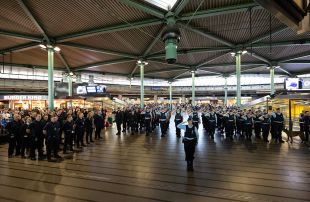Why is that? : Window blinds open for take-off and landing?
Do you prefer to have the window blind on a plane open, closed or halfway? That’s an easy question for cabin crew. They like to have the blinds open, especially for take-off and landing. In fact, the blinds have to be open during take-off and landing. And you’ll definitely hear about it if you leave them closed! The reason?
Your safety!
Don’t worry, it’s not just you that has to deal with cabin crew stressing about the window blinds. The window blinds on every plane always have to be open during take-off and landing, whether it’s dark outside or blinding sunlight. It’s for your own safety. If anything happens during take-off and landing - the most risky stages of every flight - then your eyes will already be used to the dark or the light outside, and you’ll be able to react more quickly. That’s also the reason why the lights in the cabin are dimmed for take-off and landing.
To the rescue
Another reason is that the cabin crew want to be able to see out during take-off and landing. If something goes wrong, then they can see if there is a problem with the engines or wings. And if the aircraft needs to be evacuated, you can see which side is safe to disembark from. This information can also be passed on to the pilots in the cockpit and the emergency services outside. Emergency services also prefer the window blinds to be open, so that the fire service can see immediately if there is smoke or fire on board.
Keep the blinds open
So now you know, it’s always a good idea to keep the blinds open. And it can also make your journey more interesting, because you’ll get a great view of Amsterdam Airport Schiphol and the rest of the Netherlands. Unless it’s dark outside or too cloudy. In that case, you won’t be able to see a lot and you may as well close your eyes for a well-deserved powernap until the plane starts its descent. Then it’s time to open your eyes, and of course, the window blind.
Read the previous blogs
-
Plant-based bonanza at Plaza
Published on:With more and more meat-free meals and snacks at various places at Schiphol, vegetarians are well catered for. You can enjoy a plant-based bonanza at Plaza!

-
A day in the life of... a project controller
Published on:We asked project controller Isho Toma about his position within the Finance & Control department at Schiphol and discovered that it’s a multifaceted role.

-
Ook Schiphol herdenkt met twee minuten stilte
Published on:Eens per jaar is het 2 minuten stil op Schiphol. Want ook hier herdenken we de Nederlandse slachtoffers van de Tweede Wereldoorlog en latere oorlogssituaties.
